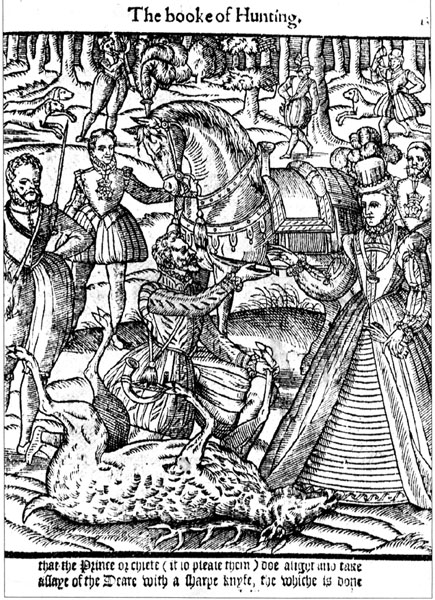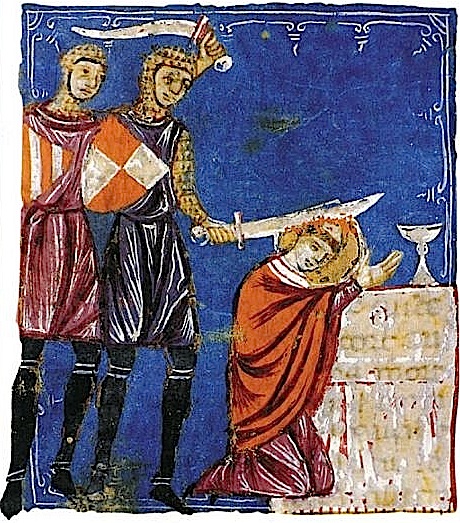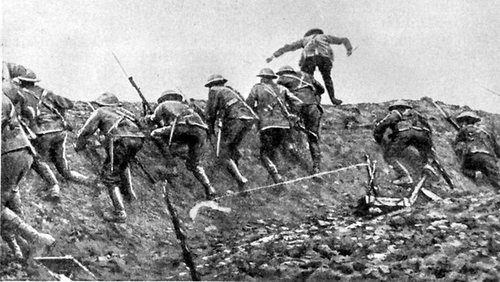

 History comes most alive in the small details, these windows that suddenly open and let us look into brightly lit rooms where sharp-cut moments transfix us:
History comes most alive in the small details, these windows that suddenly open and let us look into brightly lit rooms where sharp-cut moments transfix us:
When she was young, Queen Elizabeth I, daughter of Henry VIII, hunted deer with a crossbow and “could tell the age of a stag from its droppings (225).” *
This is what happens when royalty intermarries: “Ferdinand I of Austria, whose mother was also his double first cousin once removed, liked to pack himself into a wastepaper basket and roll down the hall, and his most coherent utterance was reportedly, “I am the emperor! I want dumplings (114).” **
File under megalomania and dark comedy: “Sculptures of [Mussolini] also multiplied, among them equestrian statues whose eyes lit up at night, flashing green, white and red (139).” ^
A series of training movements used to prepare men to fight in the Greek phalanx: “right foot forward with the spear thrust, right back to bring the enemy in off balance; the shield bash with the left foot leading; the underhand stab to the groin; the overhand thrust down into the enemy’s neck; the right hand cross slash with the cleaver; the sword chop down on the helmet, the crouch to one knee behind the shield; the right wing drift; the steady walk ahead: the double-time trot (53).” ^^
Thomas Becket, merchant’s son, advisor to the King, Henry II, who ultimately asked for his death, refused to run from his assassins in Canterbury Cathedral: “But the fifty-two-year-old Becket was a cockney, a street-fighter, as tough as old boots under the cowl, and when he stood his ground, he became physically … immovable. In extremis, his Cheapside lingo came back. ‘PIMP, PIMP’ he yelled at the [lead swordsman] (143).”^*
Just before the British soldiers left their trenches to begin their part of the attack at the Somme, July 1, 1916: “More [artillery] shells were fired by the British this week than they had used in the entire first twelve months of the war; some gunners bled from the ears after seven days of non-stop firing. At a forest near Gommecourt, entire trees were uprooted and tossed in the air by the shelling and the forest itself set on fire. Soldiers of the 1st Somerset Light Infantry sat on the parapet of their trench, cheering at the tremendous explosions. Officers issued a strong ration of rum to the men about to head into no-man’s land. Captain W.P. Neville of the 8th East Surrey battalion gave each of his four platoons a soccer ball and promised a prize to whichever one first managed to kick a ball into the German trench. One Platoon painted its ball with the legend: The Great European Cup: The Final: Easy Surreys v. Bavarians (5).” #
The one who almost lived to tell all about the fight on Last Stand Hill: “Almost all native accounts of the battle claim that there was one soldier who almost escaped. The details vary but the essential story is this: A soldier on a powerful horse suddenly bolts from the hill and miraculously breaks through the Indians and makes for open ground. Several warriors take off in pursuit, but the soldier’s horse is strong, and it begins to look as if he might actually get away. Then, just as the Indians give up the chase, the soldier pulls out his pistol and shoots himself in the head (276).”##
File under he deserved worse: “On March 1 Stalin stirred at midday, as usual. In the pantry the light came on: MAKE TEA. The servants waited in vain for the plodding instruction, BRING TEA IN. Not until 11 P.M. did the duty officer summon the nerve to investigate. Koba was lying in soiled pajamas on the dining-room floor near a bottle of mineral water and a copy of Pravda. His beseeching eyes were full of terror. When he tried to speak, he could only produce a ‘buzzing sound’ – the giant flea, the bedbug, reduced to an insect hum. No doubt he had time to ponder an uncomfortable fact: all the Kremlin doctors were being tortured in jail, and his personal physician of many years, Vinogradov, was, moreover (at the insistence of Stalin himself),‘in irons’” (233).”*#
On the scientific trail of a modern dread: Sometime close to 2500 B.C. an Egyptian physician named Imhotep wrote about his diagnostic experience with a particular illness: “If you examine [a case] having bulging masses on [the] breast and you find that they have spread over his breast; if you place your hand upon [the]breast and find them to be cool, there being no fever at all therein when your hand feels him; they have no granulations, contain no fluid, give rise to no liquid discharge, yet they feel protuberant to your touch, you should say concerning him: ‘This is a case of bulging masses … tumors of the breast … large, spreading, hard; touching them is like touching a ball of wrappings, or they may be compared to the unripe hemat fruit, which is hard and cool to the touch (40).’” @
On the Lord of Aztec Mexico and pre-conquest Tenochtitlan, on the site of present day Mexico City: Montezuma enjoyed eminences. He often had himself carried to the summit of Chapultepec … to see the superlative view … With pride, he pointed out … the two cities below, joined by causeways, with their teeming markets and straight streets, many of them with canals; the big houses with their flat roofs, on which there were gardens; … the great menagerie … in which [he] kept sacred animals, such as jaguars; the exotic vegetation and bright colors; the lovely lake, its surface covered by canoes; the towns, great and small, on the further side of the water; in the distance, the sierra, with the majestic volcanoes… The clean air and the cloudless blue sky … (300).”@@
*New Worlds, Lost Worlds: The Rule of the Tudors 1485-1603 by Susan Brigden http://www.h-net.org/reviews/showrev.php?id=7450
**The History of the Ancient World: From the Earliest Accounts to the Fall of Rome by Susan Wise Bauer http://www.amazon.com/The-History-Ancient-World-Earliest/dp/039305974X
^The Dark Valley: A Panorama of the 1930s by Piers Brendon http://www.foreignaffairs.com/articles/56593/g-john-ikenberry/the-dark-valley-a-panorama-of-the-1930s
^^The End of Sparta by Victor Davis Hanson http://www.writersreps.com/The-End-of-Sparta
^*A History of Britain: At the Edge of the World? 3500 B.C. – 1603 A.D. by Simon Schama http://www.nytimes.com/books/01/02/04/reviews/010204.04wormalt.html
#From The Great War: July 1, 1916: The First Day of the Battle of the Somme, An Illustrated Panorama. Essay by Adam Hochschild. Drawingsby Joe Sacco. http://books.wwnorton.com/books/the-great-war-preview/
##The Last Stand by Nathaniel Philbrick http://www.newrepublic.com/book/review/last-stand-custer-little-bighorn-philbrick
*#Koba the Dread by Martin Amis http://www.salon.com/2002/07/16/amis_4/
@The Emperor of All Maladies: A Biography of Cancer by Siddhartha Mukherjee http://www.newyorker.com/arts/critics/books/2010/11/08/101108crbo_books_shapin
@@Conquest: Montezuma, Cortes, and the Fall of Old Mexico by Hugh Thomas http://www.amazon.com/Conquest-Cortes-Montezuma-Fall-Mexico/dp/0671511041

fun to read!!